THE KID (1921)
The Tramp adopts an abandoned baby...
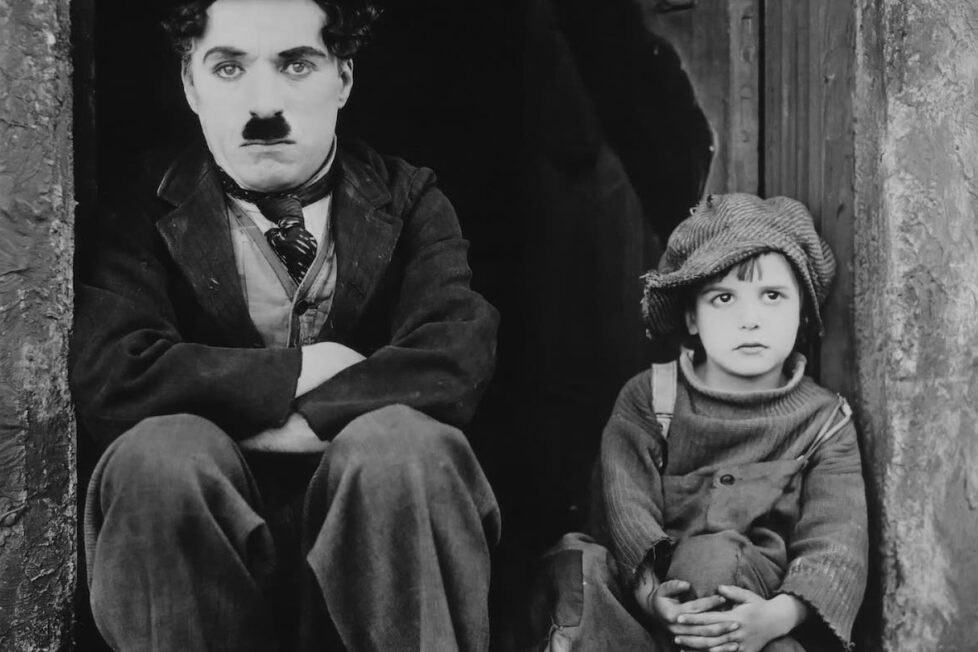
The Tramp adopts an abandoned baby...


Charlie Chaplin “worked a whole year” on The Kid, a poster for its original release excitedly declared, and it shows. Although at a glance his first full-length feature looks like the usual 1920s mix of slapstick, stereotype, and sentiment, it’s a more sophisticated film than many of its contemporaries, interweaving two fully-fledged storylines (although one was cut back for the 1972 re-release), in which believable lead characters provide genuine dramatic tension and emotional pathos as well as humour. As with all of Chaplin’s best films, in fact, one gets the impression he really felt the story personally.
Much of its exceptionally long production time was, for Chaplin, spent working closely with Jackie Coogan, the eponymous six-year-old child actor who became, as a result of The Kid, a major star for a few years. The film wasn’t scripted, although Chaplin had a general idea of how the storyline would progress; instead, scenes were worked out one at a time during shooting, Chaplin often performing himself what he wanted Coogan to do so the boy could emulate it. The fact much of it was shot chronologically must also have strengthened young Coogan’s identification with his role.
The result is one of the best child performances ever, in a film that’s a highlight of Chaplin’s career and one of the biggest commercial successes of its time; a further feather in the cap of the writer-director-actor-composer who was, by then, perhaps the world’s biggest star. Confirmed by the size of his name in the opening credits.
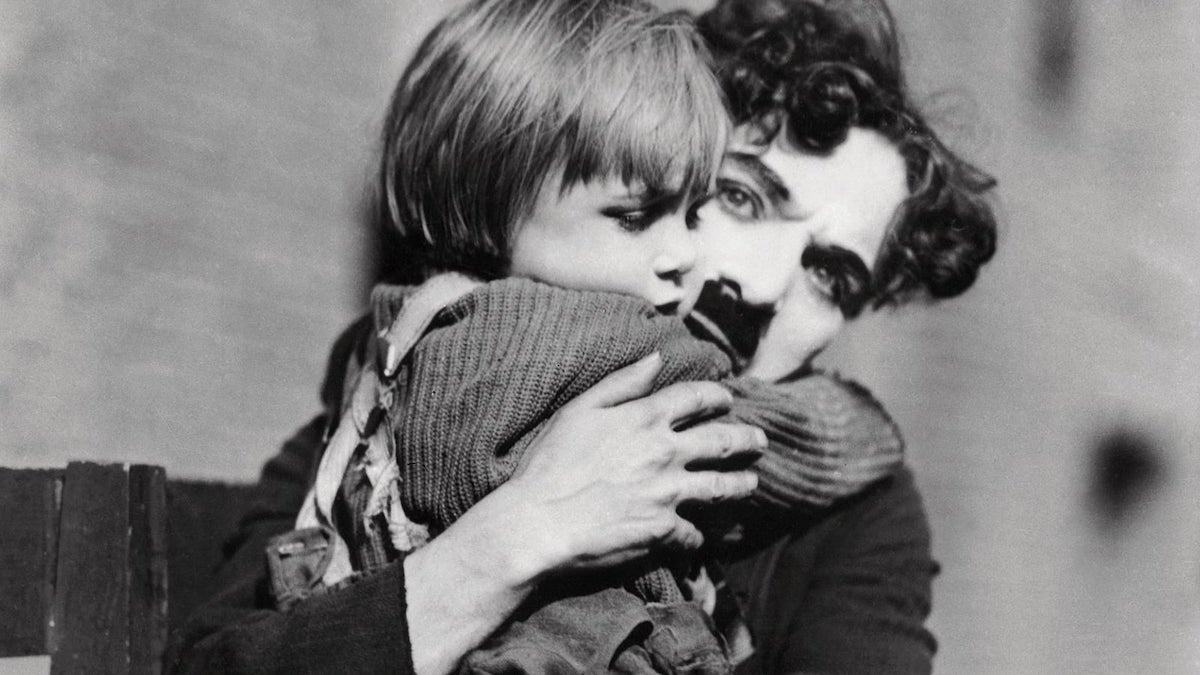
As with many of the movies featuring Chaplin’s Tramp character—like The Gold Rush (1925), for example—The Kid is one where everyday scenes from The Tramp’s life (and in this case that of the unnamed boy too) are as rich as anything directly related to the plot. Still, there’s a lot of the latter too.
The Kid opens not with Chaplin but with The Woman (Edna Purviance) leaving a hospital with a babe in arms, evidently an unwed mother being cast out onto the streets. She leaves the baby (Silas Hathaway, also known as Baby Hathaway) in a car on an expensive street, obviously hoping this will ensure he ends up in good hands but also, the movie makes clear, devastated by the action she’s had to take.
The car, however, is soon stolen by a pair of ruffians (typical 1920s film criminals) and the baby, when they discover its presence, is in turn abandoned by them in a poorer street. This near-slum area is, unsurprisingly, also the home of The Tramp; we first see him “on his morning promenade”, pelted by garbage emptied from an upstairs window, and when he shortly afterwards comes across the baby, he looks up as if it too might have been hurled from the same place.
Perhaps there’s the slightest hint in that puzzled upward glance, as well, that the child is a blessing from God? But The Tramp certainly doesn’t feel that way at first and, in a characteristically clever Chaplin setpiece, tries repeatedly to put the baby down and walk away. He’s thwarted, though, by a cop, a woman with a stroller, and another tramp-like figure. At one point he even looks in a drain, as if wondering whether to dump the baby there, but he can’t bring himself to do that and instead takes it back to his room. (As in some other Chaplin films, The Tramp here is not actually a tramp, though his means of support seem dubious; later, he enlists the child in a scam that involves breaking windows and then offering to repair them, possibly based on the real-life escapades of Chaplin’s former employer Fred Karno.)
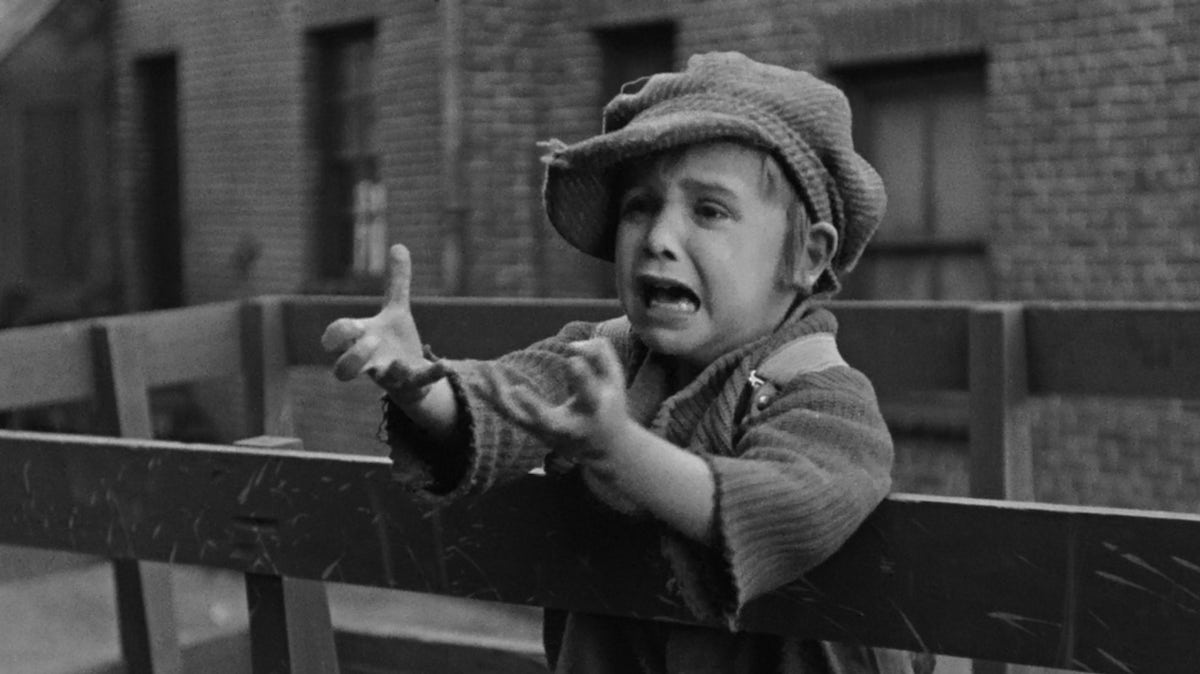
The Tramp discovers the letter left with the baby (“Please love and care for this orphan child”) and soon rigs contraptions to take care of it, like a jug on a string for feeding (some contemporary audiences were offended by implicit references to babies’ incontinence). And then five years pass, in as long as it takes to read an intertitle, and the baby is now played by Jackie Coogan (strictly speaking called ‘The Child’ rather than The Kid), and the real story begins.
This involves The Tramp and his young charge getting into various scrapes, some droll and others more emotionally charged; the latter involving conflicts with authority, always an unwelcome presence in The Tramp’s life, although in The Kid his biggest enemies aren’t the numerous police officers who appear but the management of an orphanage who attempt to take the boy away from him. Meanwhile, The Woman has become wealthy and, in the course of her charity work with impoverished children, she inevitably encounters the child she once abandoned…
All this is masterfully told by Chaplin and his cast through expression and action; the intertitles are relatively few and simple. Subtlety is, as one might expect, not always its strong point but at moments it can surprise.
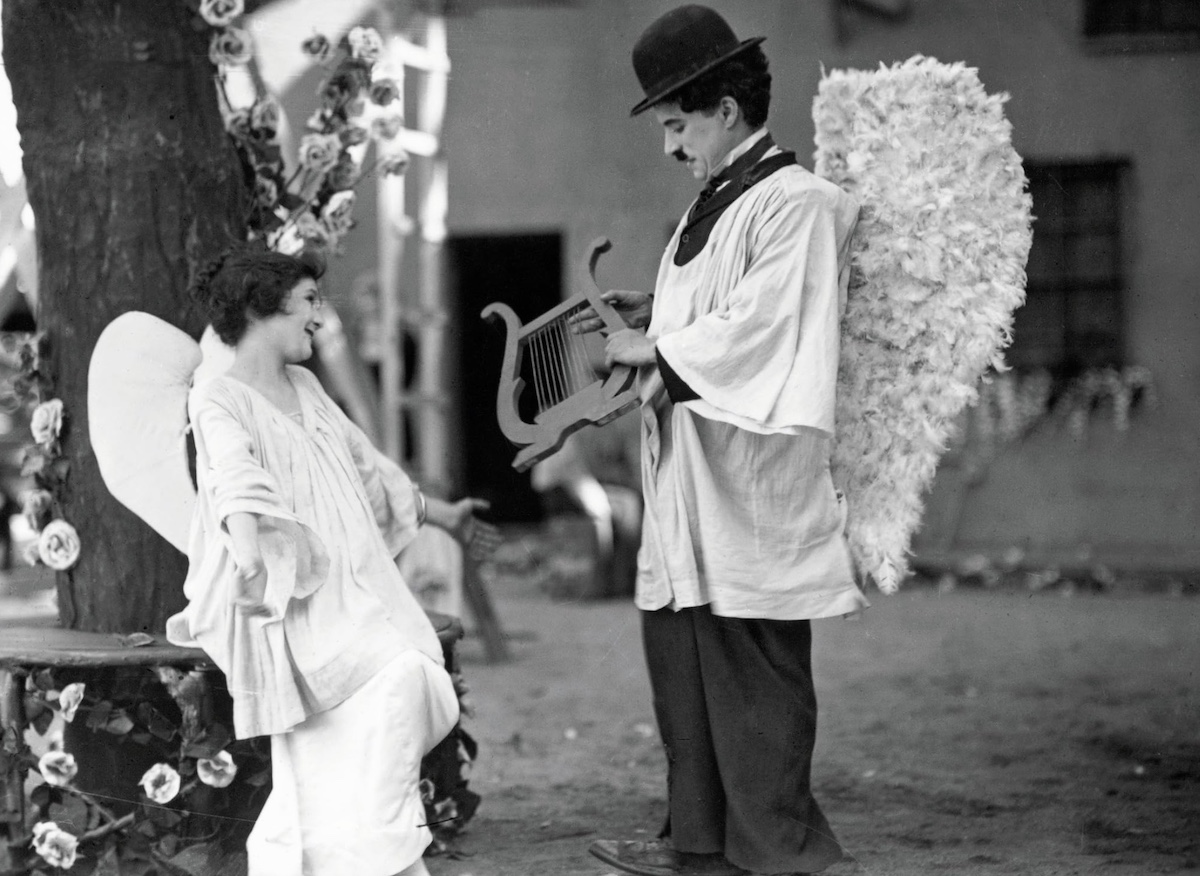
Consider, for example, the reaction of The Man (Carl Miller in a small role) when he drops a photo of The Woman in the fire. It’s strongly implied that he’s The Kid’s father and has discarded her, yet he doesn’t cast the photo away with the kind of gleeful heartlessness you’d expect from a more two-dimensional bad guy. He clearly has a moment of doubt, not only about the photo itself but about his own behaviour. Similarly, the way a child welfare officer (Frank Campeau) will only speak to The Tramp through an assistant is a nicely effective way to portray both the bureaucracy and the social arrogance which The Tramp is up against.
At other times, The Kid is far more forthright—in the superior-looking expression of the nurse who closes the door of the hospital behind The Woman at the beginning one senses Chaplin’s anger at the way she’s being treated, and the cut shortly afterwards to an image of Christ bearing the Cross is startling in its power. Whether it’s directly comparing The Woman to Christ or (more likely) alluding to the un-Christian behaviour of the hospital, the fact this shot is excessive by modern standards doesn’t diminish its effect. The commentary on this Criterion Blu-ray by Charles Maland compares it, quite justifiably, to the style of D.W Griffith.
This could make The Kid sound rather heavy going, and indeed it is a serious, at times even sombre, film. But there’s knockabout comedy too, and if the longest of the comic passages (Chaplin’s fight with a bruiser played by Charles Reisner, and an extended dream sequence about Heaven) overstay their welcome for modern tastes, the fight is terrifically well staged and the flying dog in the dream sequence is especially charming. Meanwhile, the smaller comedic touches are often done to perfection, notably a sight gag with a cop’s hand extended through an open window (The Tramp doesn’t realise whose hand it is), and another where a young delivery boy’s carrying so many flowers he’s invisible behind them.
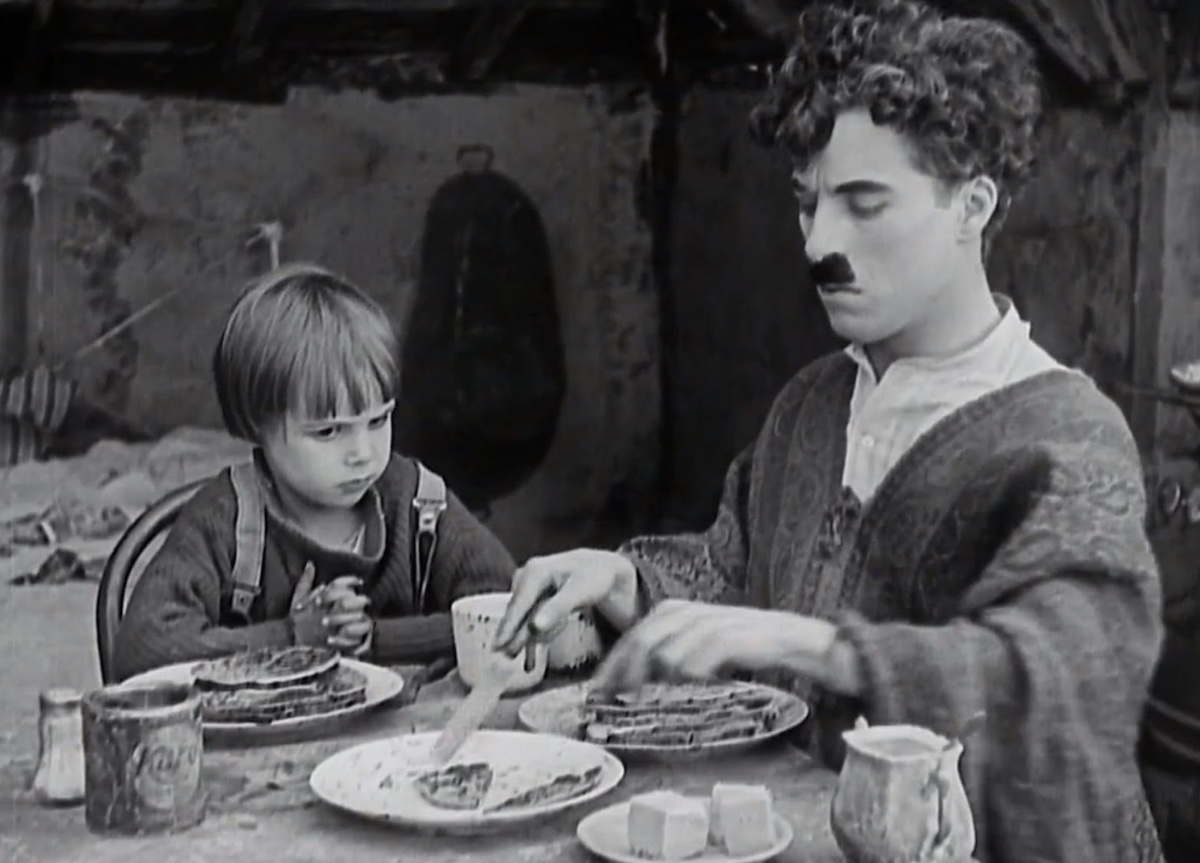
Above all, though, it’s a film to be seen for the performances. It’s Chaplin and Coogan who stick foremost in the memory, and Purviance’s scenes as The Woman got substantially cut for the 1972 re-release on which this disc is based, which also explains why the theme of motherhood seems to disappear from the film for so long before reappearing. Apart from the two lead males, it’s only Jules Hanft as a doctor who stands out. (Curiously, an intertitle describes him as “The Country Doctor”, although the setting is obviously urban and many of the exteriors were shot on location in Los Angeles. Possibly this is an oblique reference to L.A.’s rapid growth—he’s an older man, so was he a country doctor before the city sprung up around him?—but if so it’s an odd point to make.)
Coogan comes close to stealing scenes from Chaplin, no mean feat at all, with his energetic physicality and his wonderfully evil look. It’s interesting that the film was originally entitled The Waif; was it Coogan’s performance that motivated Chaplin to adopt a cheekier-sounding title?
Just as important as the boy’s own acting, though, is the chemistry between him and Chaplin and the way Chaplin captures The Tramp’s depth of feeling for The Kid. For much of the movie this is expressed in a restrained way… but a scene where The Kid, about to be removed to the orphanage, pleads desperately from the back of the wagon where he’s been placed while The Tramp is held back from going to him, packs a huge emotional wallop even today. In the same part of the film, a briefer glimpse of an orphanage worker pushing the boy is even more shocking.
USA | 1921 | 53 MINUTES | 1.37:1 | BLACK & WHITE | ENGLISH (SILENT)

Criterion’s disc contains the score which Chaplin composed for the 1972 version of the film, which is very Edwardian in style despite its late date, with Eric James and Eric Rogers credited as music associates and orchestrators. Although in reality, it’s likely they did much more than those terms suggest.
This new Blu-ray also contains an exceptional range of extras and supplements, notably the commentary by the American academic Charles Maland and a superb exploration of silent film speeds by the film accompanist Ben Model. It would, certainly, have been nice to have the 1921 version of the film itself alongside the later one—but that’s just about the only thing that’s lacking.
In any case, quite apart from the added features on the disc, there’s more than enough in The Kid itself to delight—in acting, in cinematic technique, and even in the story. That original poster wasn’t far off in promising “6 reels of joy”.

writer & director: Charlie Chaplin.
starring: Charlie Chaplin, Jackie Coogan & Edna Purviance.
